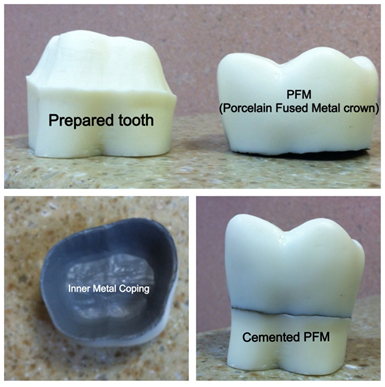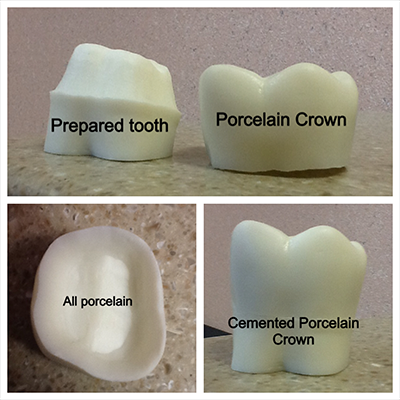Crowns
If your dentist recommends a crown, it is probably to correct one of these conditions:
- Repair and protect a broken tooth that was weakened by decay or severely worn down.
- Cover and support a tooth with a large filling already present when there isn't a whole lot of natural tooth structure left (to prevent it from breaking in the future)
- After root canal therapy
- After a dental implant is placed
- Cosmetic reasons
The process of a crown is two visits. The first visit is the preparation, which includes taking an impression for the lab. You will leave with a temporary crown this visit so you are still able to chew and for cosmetic reasons. The lab in turn makes your permanent crown, which can be a PFM (porcelain fused to metal) or an all porcelain crown. Depending on your situation, one crown may be preferred over another. An all porcelain crown is typically placed on the front teeth for a more esthetic appearance. A PFM crown is more commonly used on back teeth for stronger support since this is where you do all of your chewing











